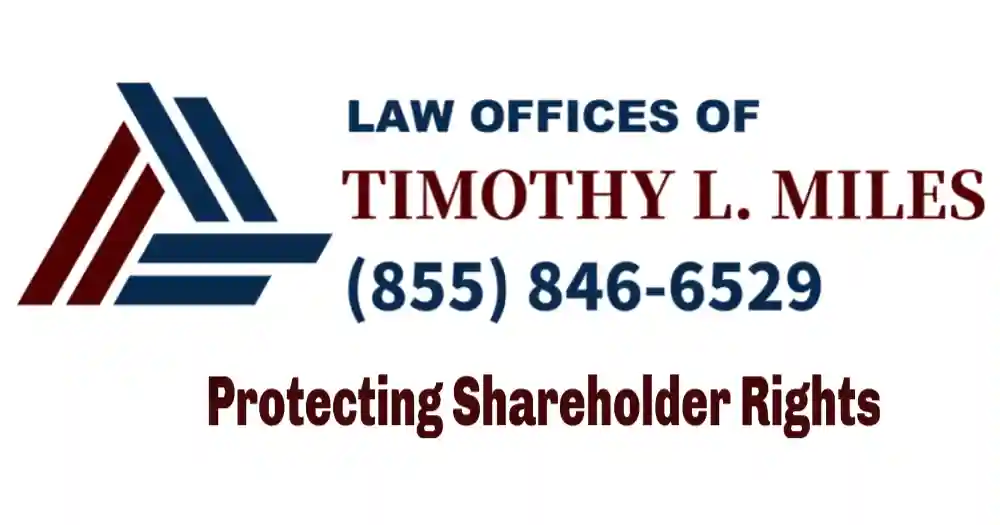Introduction to the 3D Systems Class Action Lawsuit

The 3D Systems class action lawsuit has garnered some attention even though just recently filed. As plaintiffs seek to hold the company accountable for alleged misstatements or omissions, it is crucial to understand the complexities involved in defeating a motion to dismiss under the Private Securities Litigation Reform Act (PSLRA).
In this article, we will discuss in detail the fundamental aspects of the 3D Systems class action lawsuit and explore the key elements that plaintiffs must overcome to defeat a motion to dismiss. By examining the unique requirements set forth by the PSLRA, we aim to provide a comprehensive understanding of the strategies and considerations involved in pursuing a successful securities class action claim.
The Foundations of The 3D Systems Class Action Lawsuit
3D Systems provides 3D printing and digital manufacturing solutions.
The 3D Systems class action lawsuit alleges that defendants throughout the Class Period made false and/or misleading statements and/or failed to disclose that:
- 3D Systems had understated the impact of weakened customer spending on 3D Systems’ business, while overstating its resilience in challenging industry conditions; and
- In addition, the updated milestone criteria in 3D Systems’ partnership with United Therapeutics Corporation would negatively impact 3D Systems’ Regenerative Medicine Program revenue.
The 3D Systems class action lawsuit further alleges that on March 26, 2025, 3D Systems announced its financial results for the fourth quarter and full-year 2024, reporting, among other things:
- Fourth quarter non-GAAP earnings-per-share (“EPS”) of -$0.19, missing consensus estimates by $0.08 per share, and sales revenue of $111 million, representing a -3.4% year-over-year decline and missing consensus estimates by $4.17 million;
- Full-year sales of $440.1 million, a decrease of 10% compared to the prior year, driven by “lower hardware systems sales due to macroeconomic factors that are negatively impacting demand”; and
- A “$9 million revenue reduction in Q4 driven by a change in accounting estimates for [3D Systems’] Regenerative Medicine program” “related to the now anticipated use of preclinical human decedent testing . . . which led to refinement of the milestone technical criteria.” On this news, the price of 3D Systems stock fell nearly 21%, according to the complaint.
Then, on May 12, 2025, the 3D Systems class action lawsuit further alleges that 3D Systems announced its financial results for the first quarter of 2025, reporting, among other things, revenue of $94.5 million, down 8% year-over-year and missing consensus estimates of $99.5 million; a net loss of $37 million, or $0.28 per share, more than doubling the $16 million loss reported in the first quarter of 2024; an adjusted loss of $0.21 per share, deeper than consensus estimates of a loss of $0.14 per share; and adjusted EBITDA of a loss of $23.9 million, deepening from a $20.1 million loss in the first quarter of 2024.
According to the complaint, 3D Systems attributed its disappointing results, in part, to a decline in material sales, mostly due to inventory management issues in the dental portion of its Healthcare Solutions segment. 3D Systems also announced that it was withdrawing its full-year 2025 outlook, citing prolonged softness in customer capital spending and macroeconomic uncertainty, the 3D Systems class action lawsuit further alleges. On this news, the price of 3D Systems stock fell more than 26%, according to the complaint.

The Significance of Class Action Securities Claims
Class action securities claims such as those in the 3D Systems class action lawsuit carry substantial stakes for both corporations and their leaders. Plaintiffs in these cases seek substantial monetary compensation, sometimes amounting to hundreds of millions of dollars.
Additionally, the lengthy legal process associated with securities class actions introduces significant uncertainty for all parties involved and the3D Systems class action lawsuit is no exception.
The Potential of Rule 12(B)(6) Motions to Dismiss in the MongoDB Class Action Lawsuit
Maximizing The Opportunity: Key Considerations for Defendants in the MongoDB Class Action Lawsuit
1. Individual Legal Response and Counsel
While the deadline for a defendant to answer or move is typically 21 days after service of process, class action cases often involve delays as plaintiffs’ law firms compete for lead attorney status. This is particularly true in securities fraud class actions where the court first has to consolidate multiple cases and appoint a lead plaintiff.
During these delays, defendants should carefully assess whether their interests align with those of the company or other individual defendants. In many cases, retaining individual counsel representing each defendant’s unique perspective and interests is crucial. It is equally important for defendants to collaborate with co-counsel when appropriate to advance arguments that benefit all parties involved. Corporate liability insurance policies often cover the cost of individual counsel for key personnel through Directors-and-Officers (D&O) Policies.
2. Seeking Dismissal through a 12(b)(6) Motion
3. Four Key Elements for Dismissal
a. Misstatements or Omissions
The Lead Plaintiff in the 3D Systems class action lawsuit must demonstrate that the defendant company and/or its officers made false misstatements or omissions of fact that were essential to make other statements “not misleading.” The plaintiffs must identify specific misleading misstatements or omissions, considering the complex rules governing the existence of a duty to disclose.
b. Materiality
The Lead Plaintiff in the 3D Systems class action lawsuit must convince the court that the allegedly withheld or misstated information were material, meaning it could have influenced a reasonable investor’s decision to buy or sell the company’s stock. Materiality is assessed based on the total mix of public information available.
c. Scienter
The Lead Plaintiff in the 3D Systems class action lawsuit is also required to show either an intent to deceive or extreme recklessness on the part of each defendant. This showing must be individualized, considering that the state of mind of one defendant cannot be imputed to another. The PSLRA imposes stringent requirements on plaintiffs to specify each misleading statement, reason, and all facts supporting their belief.
d. Loss Causation
Finally, the Lead Plaintiff in the 3D Systems class action lawsuit must establish a clear connection between the alleged misstatement or omission and investors’ losses. This usually involves demonstrating that the stock price was artificially inflated by false statements or omissions and subsequently declined when the truth was revealed through corrective disclosures. The timing of relevant disclosures and historical stock price data during the relevant period are crucial factors in determining loss causation.
Final Considerations at the Pleadings Stage In the 3D Systems Class Action Lawsuit
To proceed beyond the motion to dismiss stage, the lead plaintiff in the 3D Systems class action lawsuit must plead facts that, if proven, would establish all four key elements. Overcoming these requirements poses significant challenges, as demonstrated by the high rate of dismissals in securities class action cases. However, even if a motion to dismiss fails, subsequent opportunities to seek relief exist, such as challenging class certification, filing motions for summary judgment, or limiting damages after a settlement or judgment.
In conclusion, the 3D Systems class action lawsuit presents complex legal challenges for both plaintiffs and defendants. Understanding the intricacies of securities class action claims and the unique requirements set forth by the PSLRA is crucial for effectively navigating this legal landscape. By leveraging the strategies and considerations outlined in this article, plaintiffs can increase their chances of overcoming a motion to dismiss and pursuing a successful securities class action claim in the 3D Systems class action lawsuit
Frequently Asked Questions
Can I serve as a lead plaintiff in the class action against 3D Systems if I purchases shares outside of the class period?
No. Even if you suffered losses in 3D Systems stock, if you purchased securities outside of the Class period, you will not be able to participate in the 3D Systems lawsuit.
Can I serve as a lead plaintiff in the class action against 3D Systems if I am serving as lead plaintiff in another securities fraud case?
Yes, unless you have been a lead plaintiff in more than five securities class actions during any three-year period which is expressly prohibited by the securities laws. Otherwise, if you suffered losses in MongoDB stock, you may move to be appointed lead plaintiff in the 3D Systems lawsuit.
Can the court appoint more than one lead plaintiff in the 3D Systems lawsuit?
Yes, at its discretion the Court may appoint a person, entity, or group of persons and/or entities as Lead Plaintiffs in the 3D Systems class action lawsuit.
How do I know if I am a member of the class in the class action against 3D Systems?
If you purchased shares during the class period and suffered losses in MongoDB stock, then you are most likely a member of the class in the MongoDB lawsuit and may participate in the MongoDB lawsuit since you suffered losses in 3D Systems stock.
Can I serve as lead plaintiff in the 3D Systems class action lawsuit if I sold my shares?
Yes. There is no requirement for you to retain ownership of the stock after the class period has expired to participate in the 3D Systems lawsuit.
Contact 3D Systems Loss Lawyer Today Timothy L Miles Today About A 3D Systems Class Action Lawsuit
If you suffered losses in 3D Systems stock, contact 3D Systems stock loss lawyer Timothy L. Miles today for a free case evaluation about a 3D Systems class action lawsuit. Call today and see what a 3D Systems stock loss lawyer could do for you if you suffered losses in 3D Systems stock. This will most likely be the only call you need to make. (855) 846–6529 or [email protected].
Frequently Asked Questions about 3d Syestem Lawsuit
What initiated the 3D Systems class action lawsuit?
The lawsuit was initiated by investors alleging that 3D Systems provided misleading information regarding its financial health and operations, resulting in financial losses.
How can I join the 3D Systems lawsuit?
If you purchased shares during the class period and suffered a loss, then you are automatically a member of the class and do not need to do anything at this point unless you are considering moving for lead plaintiff.
What are the potential benefits of a 3D Systems lawsuit?
Class action lawsuits allow individual investors to collectively seek justice and compensation, which might be challenging to pursue individually. They also promote corporate accountability.
How long will the 3D Systems lawsuit take to resolve?
The duration of class action lawsuits can vary significantly, depending on the complexity of the case, legal strategies, and whether settlements are reached. It could take several months to years.
Contact Timothy L. Miles Today About an 3D Systems Class Action Lawsuit
If you suffered substantial losses and wish to serve as lead plaintiff of the 3D Systems provided misleading, or just have general questions about you rights as a shareholder, please contact attorney Timothy L. Miles of the Law Offices of Timothy L. Miles, at no cost, by calling 855/846-6529 or via e-mail at [email protected]. (24/7/365).
Timothy L. Miles, Esq.
Law Offices of Timothy L. Miles
Tapestry at Brentwood Town Center
300 Centerview Dr. #247
Mailbox #1091
Brentwood,TN 37027
Phone: (855) Tim-MLaw (855-846-6529)
Email: [email protected]
Website: www.classactionlawyertn.com
Facebook Linkedin Pinterest youtube
Please see the various investor resources below for an additional wealth of information.



